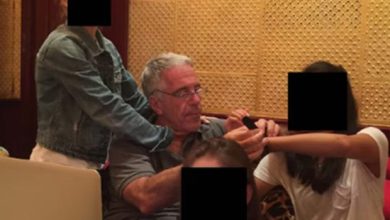This meal can give you cancer if you take just one bite
If you’re health-conscious, you might already be mindful of the foods you eat in moderation. But there’s one dish out there where even a single serving could be too much.
Koi Pla, a traditional dish popular in Laos and Thailand’s Isan region, is deceptively simple: minced raw fish, lemon juice, herbs, and spices. It’s even considered a type of salad by locals. Yet, this seemingly harmless delicacy is linked to an alarming statistic—around 20,000 deaths each year, primarily due to a deadly form of liver cancer.
The danger lies not in the raw fish itself but in what lurks within the waters of the Mekong region, where the fish are typically sourced. The waters harbor parasitic flatworms, known as liver flukes, which can cause bile duct cancer, or cholangiocarcinoma (CCA). East Asia has one of the highest rates of this deadly cancer globally, largely due to dishes like Koi Pla.

Locals are hesitant to the change due to the taste and convenience of the meal. (Wikimedia Commons)
Fighting a Silent Killer
One man leading the charge against this health crisis is Dr. Narong Khuntikeo, a liver surgeon whose personal loss—his parents both died of liver cancer—fueled his mission.
“It’s a very big health burden around here,” Dr. Narong told Agence France-Presse. “But nobody knows about this because they die quietly, like leaves falling from a tree.”
In 2017, Dr. Narong assembled a team of scientists, doctors, and anthropologists to combat the issue. Over four years, they screened villagers in the Isan region using ultrasound machines and urine tests. The results were staggering: up to 80% of people in some communities had been exposed to the deadly parasite.
A Cultural Challenge
While Dr. Narong’s efforts have raised awareness, he faces resistance, particularly from older generations who see the dish as a cherished tradition. “They’ll say, ‘Oh well, there are many ways to die,’” he explained. “But I cannot accept this answer.”
For some, like farmer Boonliang Konghakot, eating raw fish remains a way of life. “I used to come here and just catch the fish in the pond… it’s so easy to eat raw,” he said.
Another villager, Thanin Wongseeda, who participated in Dr. Narong’s screenings, admitted, “I’ve never been checked before, so I think I will probably have it because I’ve been eating [Koi Pla] since I was little.”

Koi pla is said to claim the lives of 20,000 Thai people each year. (Wikimedia Commons)
The Path Forward
Dr. Narong’s work is crucial in educating people about the risks of Koi Pla and reducing cases of bile duct cancer. But changing deeply rooted habits and traditions will take time.
For now, his team continues to raise awareness, urging communities to think twice before indulging in this potentially deadly delicacy. “We need to protect lives,” Dr. Narong emphasized.
If you’re traveling in Southeast Asia, be mindful of local dishes and consider the hidden risks that might come with them. A simple choice could save your health—or even your life.












